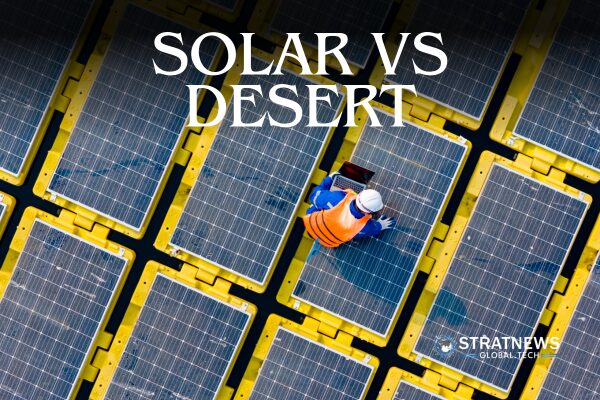China Deploys Solar Panels in Long Battle Against Desert Expansion
In northern China’s arid landscapes, solar panels are doing more than generating electricity—they’re helping to stop the spread of deserts. At a vast solar farm near Yinchuan in Ningxia, thousands of solar panels cast shade over goji berry bushes, shielding the dry land below from the harsh sun.
The 1-gigawatt facility is part of a broader effort using solar power to fight desertification across China’s northern and western regions. The project is led by Ningxia Baofeng Energy Group, a major player in the coal chemical sector. According to Liu Yuanguan, the company’s vice chairperson, Baofeng plans to develop 30 GW of solar capacity, some of which will support anti-desertification work.
Combining Shade and Shrubs to Restore Land
“The panels act like tiny umbrellas,” Liu explained during a government-led tour of the site. “They provide shade that helps reduce water evaporation from the soil.”
This solar-shading technique helps hardy plants survive in harsh climates. Barriers placed around the solar fields reduce wind speed and help keep the sand in place. Local authorities estimate it can take up to five years before the land shows signs of recovery.
Though these solar desert projects represent a small part of China’s massive solar expansion, their role is growing. In September, the country included solar development in an update to its long-standing “Three Norths” shelterbelt programme, which began in 1978 and runs until 2050.
Ambitious Plans to Reclaim the Sands
China’s plan aims to install 253 GW of solar between 2025 and 2030, covering an area of 7,000 square kilometres—roughly four times the size of Greater London. This initiative is designed to rehabilitate dryland while also protecting arable farmland. In 2023, China introduced rules banning the installation of solar panels on productive farmland, shifting focus to desert regions.
Despite these efforts, progress remains slow. Desertified land accounted for 26.8% of China’s territory in 2024, only slightly down from 27.2% a decade earlier.
At Baijitan nature reserve, which is located several hours from Baofeng’s facility, around 800 square kilometres of desert have been reclaimed over the decades. However, officials acknowledge that the goal is not to eliminate deserts entirely.
“This is a long and difficult battle,” said Wang Xiaoling, the reserve’s director. “We aim to minimise damage rather than erase the desert completely.”
with inputs from Reuters


